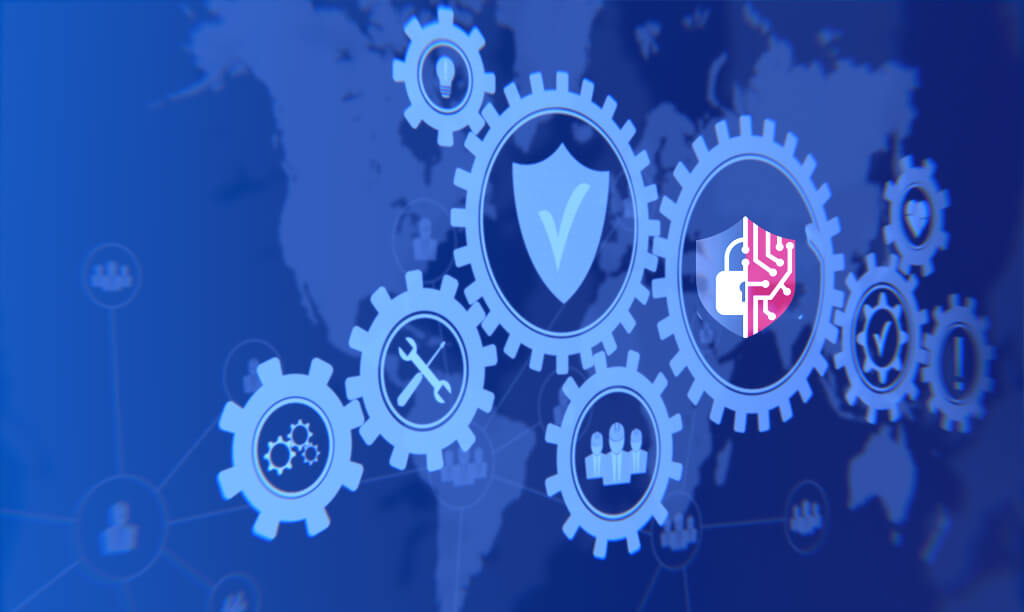Safeguarding the organizational assets is very important. With cyber threats advancing at an alarming pace, all the organizations face the daunting task of protecting their digital infrastructure from potential breaches, data theft, and regulatory non-compliance. In this situation, Governance, Risk, and Compliance (GRC) emerges as a critical framework for ensuring robust security measures and regulatory adherence. Prioritizing GRC isn’t just an option; it’s an imperative for protecting the integrity, confidentiality, and availability of sensitive information within an organization.
Understanding GRC:
GRC encompasses a set of practices, the policies, processes, and controls implemented by an organization to manage and mitigate risks, ensure compliance with relevant regulations, and maintain effective governance structures. By integrating GRC principles into their business operations, organizations can proactively address potential vulnerabilities, minimize risk exposure, and enhance overall resilience against cyber threats.
- Governance: Governance refers to the framework of policies, procedures, and decision-making processes that guide the organization’s actions and behaviors. Effective governance ensures that resources are used responsibly, risks are managed appropriately, and objectives are achieved efficiently.
- Risk Management: Risk management involves identifying, assessing, and mitigating risks that could potentially impact the organization’s ability to achieve its objectives. This includes both cybersecurity risks, such as data breaches and malware attacks, and non-cyber risks, such as operational disruptions and regulatory fines.
- Compliance: Compliance entails adhering to laws, regulations, standards, and internal policies relevant to the organization’s operations. This includes industry-specific regulations like GDPR, HIPAA, PCI-DSS, as well as broader standards such as ISO 27001.
The digital landscape presents a variety of challenges that necessitate a comprehensive GRC approach:
- Rising Cyber Threats: Cybercriminals continually exploit the vulnerabilities in digital systems to gain unauthorized access, steal sensitive data, and disrupt business operations. From ransomware attacks to phishing scams, the cyber threat landscape is constantly evolving, requiring the organizations to adopt proactive measures to safeguard their digital assets.
- Regulatory Compliance Requirements: Regulatory bodies impose very stringent requirements on the organizations to protect consumer data, ensure financial transparency, and uphold industry-specific standards. Failure to comply with these standard regulations can result in penalties, legal repercussions, and damage to the organization’s reputation.
- Complexity of Digital Ecosystems: The proliferation of cloud services, mobile devices, IoT devices, and third-party integrations has significantly increased the complexity of organizational IT environments. Managing security risks across these diverse platforms and ensuring data integrity requires a structured GRC framework.
- Data Privacy Concerns: With the growing emphasis on data privacy rights, organizations must prioritize the protection of personally identifiable information (PII) and sensitive corporate data. Violations of data privacy regulations such as GDPR and CCPA can lead to significant fines and tarnish the organization’s credibility.
The Significance of Prioritizing GRC:
Prioritizing GRC offers several compelling benefits for organizations determined to safeguard their digital assets:
- Adherence to Regulatory Compliance: Prioritizing GRC frameworks enable organizations to align their policies and procedures with the relevant regulations and industry standards, ensuring compliance with legal requirements and avoiding costly penalties. Moreover, demonstrating compliance can enhance trust and credibility among customers, partners, and stakeholders.
- Risk Identification and Mitigation: Prioritizing GRC enables organizations to proactively identify and mitigate cybersecurity risks before they escalate into big security breaches. By conducting comprehensive risk assessments and implementing robust security controls, organizations can identify potential vulnerabilities and take proactive measures to mitigate risks.
- Enhanced Governance and Oversight: GRC promotes transparency, accountability, and effective decision-making by establishing clear governance structures, delineating roles, and responsibilities, and fostering a culture of risk awareness throughout the organization.
- Operational Efficiency: Streamlining GRC processes through automation and integration enhances operational efficiency, reduces administrative overhead, and enables resources to focus on strategic initiatives rather than routine compliance tasks. By embedding resilience into their organizational culture, businesses can better adapt to disruptions, recover from incidents more swiftly, and sustain long-term success amidst evolving threats and uncertainties.
- Reputation Management: A single data security breach or compliance violation can tarnish an organization’s reputation and impact customer trust overnight. By demonstrating a commitment to security and compliance, organizations can enhance their brand reputation, build trust with stakeholders, and differentiate themselves in a competitive marketplace.
In the journey of prioritizing GRC within your organization, partnering with a trusted cybersecurity company like Ampcus Cyber can provide invaluable support and expertise. Ampcus Cyber offers a comprehensive suite of GRC solutions tailored to the unique needs of organizations across industries:
To effectively prioritize GRC within your organization, consider the following strategies:
- Establish a Cross-Functional GRC Team: Bring together representatives from various departments, including IT, legal, compliance, and risk management, to collaborate on developing and implementing GRC initiatives.
- Expert Guidance: Ampcus Cyber’s team of experienced cybersecurity professionals provides expert guidance on developing and implementing robust GRC frameworks tailored to your organization’s specific requirements and regulatory obligations.
- Conduct Regular Risk Assessments: Continuously evaluate the organization’s risk landscape, identify emerging threats, and adjust security controls and compliance measures accordingly.
- Invest in Technology Solutions: Leverage GRC software platforms to automate compliance tracking, risk assessments, and incident response, thereby streamlining GRC processes, enhancing operational efficiency and increases visibility into potential vulnerabilities.
- Provide Ongoing Training and Awareness: Ampcus Cyber offers customized training and awareness programs to educate employees about data and payment security best practices, regulatory requirements, and the importance of GRC in safeguarding organizational assets. Promote the culture of compliance and accountability at all levels of the organization.
So, prioritizing GRC is not just a matter of regulatory compliance; it is essential for safeguarding your organization’s digital assets and ensuring long-term viability. By adopting the GRC principles and integrating them into your business operations by partnering with a trusted cybersecurity firm like Ampcus Cyber, you can effectively manage the risks, comply with standard industry regulations, and maintain the trust and confidence of your stakeholders.
Enjoyed reading this article? Stay updated with our latest exclusive content by following us on Twitter and LinkedIn.
